- Administrator
- Albums and Singles

The word "Aven" refers to an underground shaft that leads upward from the roof of a cave passage.
Bethan Kellough creates sound worlds that weave together instrumental materials, sound design and ambisonic field recordings. Her composition "Aven" is based on a recording made in Iceland in 2015, which features the booming sound of underground geothermal activity escaping to the surface through a small shaft. “Looking down into the darkness, there was a sense that a whole world existed in an unknown space beneath. The sound world of Aven is a journey through such an imagined environment.”
The composition is driven by this sonic encounter, but enters the imagined worlds beneath through the instrumental material developed throughout the work. These melodic passages predominantly feature violin, which Bethan has played since childhood exploring traditional Scottish music, rock violin, free improvisation and classical studies. The field recordings used in Aven were made in Iceland during the Wildeye sound recording workshop with Chris Watson and Jez Riley French, and in South Africa during the Sonic Mmabolela residency with Francisco Lopez and James Webb. Each of the recordings explore a world of sound beneath a surface, reflecting upon the initial recording environment at the geothermal site. In South Africa, an approaching storm was heralded by wind blowing through bushes in the savanna, underneath which was hidden a Soundfield microphone. A contact microphone on a fence in South Iceland revealed the tones of the wind contained inside the wires, and in an Icelandic nature reserve the wind was also captured by microphones buried underneath a layer of grass – a miniature world sheltered by the strands of dry straw.
More information can be found here.
Read More
- Administrator
- Albums and Singles
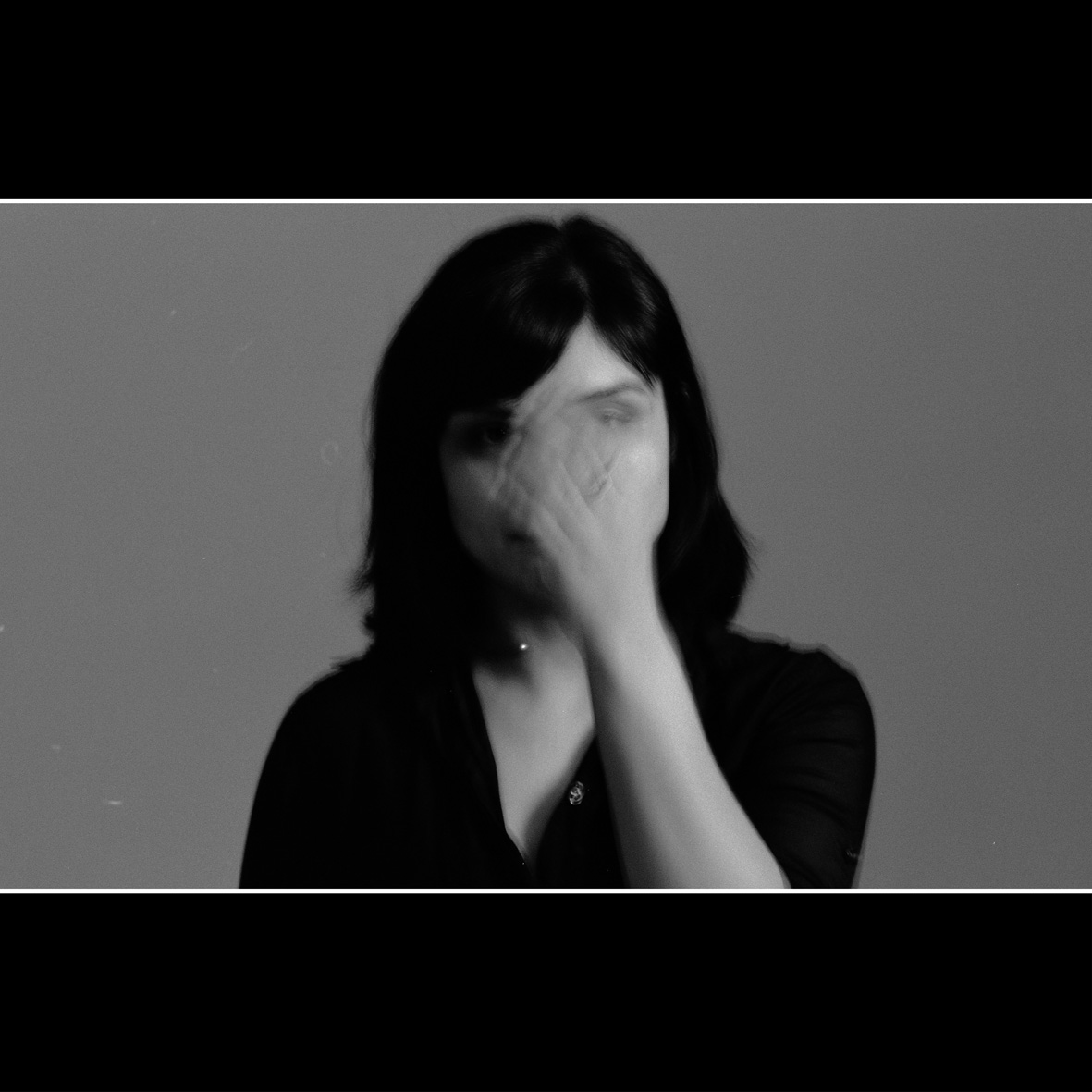
Following hot on the heels of this year’s synth-centric Dominions, Sarah Davachi returns to Students of Decay for a bit of an unexpected curveball: an album with no synthesizer at all.  Employing an organ, some strings, a piano, and her own voice, Davachi mostly reprises the minimal, drone-centered aesthetic of her previous work (she is quite fond of sustained notes and slow-building harmonies), but also impressively expands her niche with a few more conventionally melodic pieces.  As a result, the elegant and understated All My Circles Run is likely the most diverse of Davachi’s albums to date, sustaining a slow-burning and subtly shifting reverie for forty sublime minutes.
The album opens in characteristically Davachi-esque fashion, as a simple, gently undulating violin drone unfolds for over a minute before any overt transformation begins to creep in.  In fact, "For Strings" may very well capture Davachi at her most minimalistic, as the entire piece is essentially just a hazy, slow-motion massing of notes into a lush chord (or at least a more harmonically rich drone).  There is a bit of a minor surprise at the end, however, as all of the strings gradually disappear to leave behind an unexpected wake of quietly throbbing and stuttering noise.  It is quite a clever bit of compositional sleight of hand: using an ostensibly straightforward drone piece to secretly weave a complex undercurrent of uncomfortably oscillating harmonies, then pulling back the veil to reveal it.  I enjoy surprises and neat tricks.  I was actually quite a bit more taken with the following "For Voice"  though (matter-of-fact song titles abound here).  Using only her own voice and a sustained and wobbly thrum, Davachi casts a haunting and evocative spell as the various soft-focus layers of wordless, angelic voices intertwine to form eerie minor key harmonies.  Unlike many Davachi pieces, "Voices" appears in a fully formed state and stays that way for nearly ten minutes of dreamlike, otherworldly beauty, as there is no need to blossom into anything more. "Chanter," which follows, is yet another divergence from the expected, albeit a somewhat less heavenly one.  While a "chanter" is part of a bagpipe, the piece sounds very much like it was played on a submerged piano.  Much like "For Strings," it is yet another piece where a very simple theme undergoes a very subtle and slow-motion transformation.  In this case, the repeating two-chord theme is gradually muddied by the addition of other notes, which gradually darkens the harmonic waters to increasingly hallucinatory and disquieting effect.
"For Organ" returns to a bit more familiar and established territory, as a sustained organ drone gently undulates in apparent stasis as other notes slowly and sneakily seep in to subtly shift its mood and coloration.  Unexpectedly, however, Sarah begins playing actual, overt notes around the halfway point and the transformation is greatly accelerated into a lush, shimmering haze of gently pulsing harmonies.  The album’s final piece, however, does not seem particularly indebted to Davachi’s previous work at all, as "For Piano" is essentially a simple, gentle, and melodic piano miniature that falls within shouting distance of artists like Harold Budd and Stars of the Lid.  The sole "Davachi" touch is merely that the piano is competing for the foreground with a very prominent and visceral string drone that provides a sharp counterbalance to the piece’s more pastoral aspects.  It is not my favorite piece on the album by any means, but it works quite well nonetheless, as Sarah has found a way to expand outwards into more serene territory without quite losing her bite.  Also, I was caught very much off-guard when the piano part actually changed into something new and became fairly loose and improvisatory, a tactic that seems almost radical in the context of Davachi’s history of patient, glacially unfolding accretion.
In a way, "For Piano" might actually be the most significant piece on the entire album, as even the similarly divergent "For Voice" sticks quite close to Davachi’s comfort zone of skillfully crafted, slow-moving threads that twist together to yield vibrant textures and rich harmonies.  That aesthetic obviously works quite well, but it is necessarily a somewhat constrained one that is hard to explore for long without everything starting to sound over-familiar.  While several of the other pieces are much more to my liking (particularly "For Voice"), it is "For Piano" that shakes up Sarah’s aesthetic the most by incorporating loose and evolving melodies and drifting quite far from the original motif.  It will certainly be interesting to see where Davachi evolves from here, but all bets are off for now, as she is about to release her third album of 2016 on Important and there is no clear arc that I can unravel with such a condensed chronology.  In any case, All My Circles Run is yet another fine album from Davachi, using deceptive simplicity as a foundation for sneakily escalating complexity and vivid harmonic depth.  I do not think that it necessarily surpasses Barons Court, but it is very much on a similar level.
 
Read More
- Administrator
- Albums and Singles
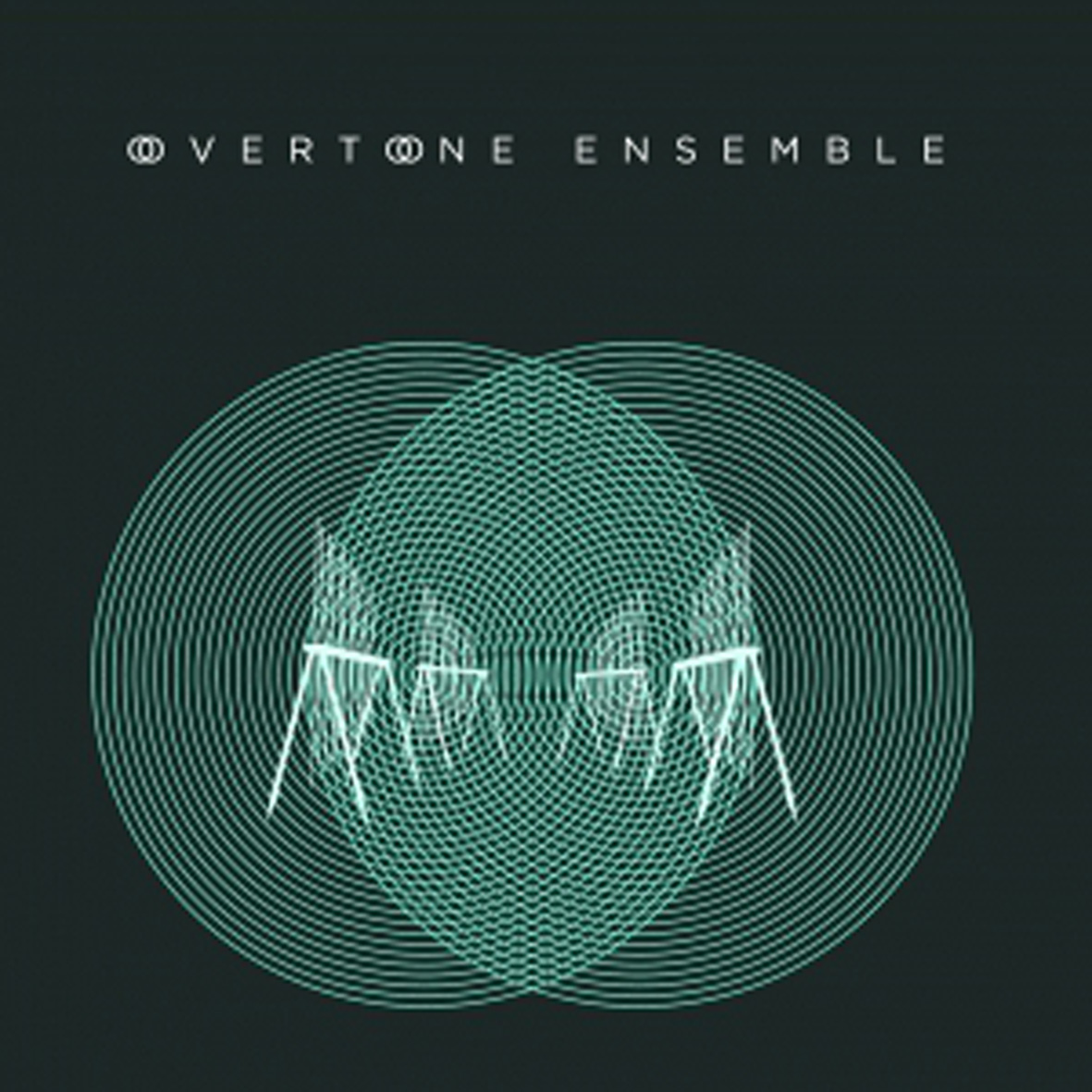 Despite being one of the more inventive and intriguing artists in the contemporary experimental music milieu, Australia's Tim Catlin is not a particularly well-known name here in the US, though he has collaborated with both Jon Mueller and Machinefabriek in the past.  It is hard to say whether or not his first full-length for Important will raise his profile though, as it easily stands as one of the most uncompromisingly hyper-minimal and outré releases from the label in recent memory.  For one, it is devoted primarily to works composed for the Vibrissae, a set of "microtonally tuned metal rod instruments" built by Catlin.  Secondly, it provides exactly what the name "Overtone Ensemble" suggests: plenty of eerily harmonizing sustained tones and little more.  As such, it is probably a hard sell for anyone not deep into the more rarified fringes of sound art, but it is a quite unique and wonderful release for those of us with ears attuned to that wavelength, at times exploring terrain not dissimilar to that of Catlin’s label mate Ellen Fullman.  Other times, it probably sounds like absolutely nothing else on earth.
Despite being one of the more inventive and intriguing artists in the contemporary experimental music milieu, Australia's Tim Catlin is not a particularly well-known name here in the US, though he has collaborated with both Jon Mueller and Machinefabriek in the past.  It is hard to say whether or not his first full-length for Important will raise his profile though, as it easily stands as one of the most uncompromisingly hyper-minimal and outré releases from the label in recent memory.  For one, it is devoted primarily to works composed for the Vibrissae, a set of "microtonally tuned metal rod instruments" built by Catlin.  Secondly, it provides exactly what the name "Overtone Ensemble" suggests: plenty of eerily harmonizing sustained tones and little more.  As such, it is probably a hard sell for anyone not deep into the more rarified fringes of sound art, but it is a quite unique and wonderful release for those of us with ears attuned to that wavelength, at times exploring terrain not dissimilar to that of Catlin’s label mate Ellen Fullman.  Other times, it probably sounds like absolutely nothing else on earth.
The Overtone Ensemble project is a fairly recent development in Catlin's career, as he formed it in 2012 to focus on his Vibrissae works (the instruments borrow their name from cat whiskers).  Prior to the birth of the Ensemble, Catlin was primarily known as an experimental guitarist with an impressive talent for instrument modification, building an array of guitars (and a zither) designed for bowing and unusual harmonics.  He also built gongs and bells from scuba tanks and heaven knows what else.  Catlin is very much an "idea man."  Conceptually, the Vibrissae are an extreme but logical extension of Tim’s earlier experiments with pick-up placement, eBow modification, bowing, and unconventional fret locations.  While it is quite a big leap in practice to move from playing a guitar to "activating" metal rods with longitudinal stroking, it is not hard to see a piece like the ghostly, droning "Adumbration" as a bowed performance on an unfeasibly large, multi-person guitar.  In essence, Catlin just ingeniously found a way to get the sustained, deeply resonant, and spectral sounds that he always wanted without having to use any effects or processing.
Of course, the downside to the Vibrissae is that rubbing a metal rod offers an extremely constrained palette, achieving a very specific sound quite beautifully, but not leaving many options for stylistic or dynamic variety.  Consequently, these four pieces tend to take their individual character from whatever accompanying instrumentation Catlin and his ensemble throw into the mix.  On "Scintillation," for example, there are some clattering metallic sounds, some gongs, and a host of harsh feedback-like whines coaxed from wineglasses or bowls.  Elsewhere, "Oscillation" sounds like the ensemble is playing a complex battery of cymbals and large bells, though it gets more compelling as it gets less busy, as all the clattering racket conceals any of the microtonal harmonic activity happening in the background.  In fact, it kind of sounds like a wild free-jazz drum solo if the hapless drummer in question suddenly found himself missing his snare, toms, bass drum, and high-hat.  Sadly, it is not quite as great as that scenario might sound.  The closing "Accretion" is great, however, as the ensemble uses a battery of handbells to create a vibrantly twinkling, surprisingly physical, and queasily dissonant unreality.  It is like the air itself is somehow transformed into a visceral and malign entity.  There is nothing else quite like it that I have heard.
To my ears, it is exclusively the bookends where the Overtone Ensemble seem like they are realizing their full potential.  I would even go so far as to declare "Accretion" an absolutely singular and legitimately evil-sounding piece of music.  While the middle of the album is definitely eclipsed by the surrounding pieces, I would not say that this album has any significant flaws that could be avoided: the fundamental premise is necessarily a hugely limiting one.  The Overtone Ensemble's appeal lies primarily in the unique and resonant sounds that Catlin's self-built instruments generate, which can sometimes be quite amazing given the absence of processing.  On pieces like "Adumbration," Catlin creates a microtonal cloud of harmonies that seems to hang in the air, shimmering and undulating with a life of its own and "Accretion" sounds like nothing less than the very fabric of reality being gleefully ripped apart.  That is reason enough to hear this album, as far as I am concerned.  Of course, the complex and unpredictable interplay between notes is quite wonderful as well, but the Overtone Ensemble's talents are strictly limited to texture and harmony.  An argument could probably be made that there is quite a bit of hyper-nuanced melodic and rhythmic activity unfolding as well, but it is not anything that is happening on a scale that normal humans can pick up on: anyone looking for great compositions should look elsewhere, as should anyone expecting Catlin's unnerving harmonic swarm to ever blossom into a beautiful vista of warmth and consonance.  This album is what it is.  And what it is most closely resembles is an impossible rich, alien, and sometimes absolutely mesmerizing sound art installation that unexpectedly sprung up in my apartment.
 
Read More
- Administrator
- Albums and Singles
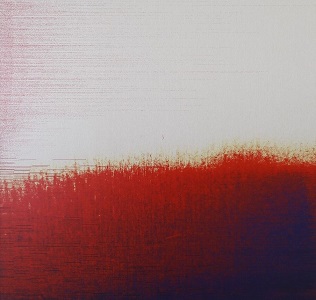 In Versatile Ambience’s second half, Jeph Jerman and Tim Barnes cobble together a sequence of individual words and short phrases from a small ensemble of speakers. As each solitary fragment, captured with varying degrees of fidelity, falls into place, a kind of instructional sense emerges from the cut-up poetic randomness: "Your voice arrested; the smithy’s forge displacing hard footfall with scrutiny of boot-leather. Attempts to redirect equally malleable." A final exchange points the way to Versatile’s heart: "You, the anvil?" someone questions. A faded voice replies, "I’m the hammer." Using insect and animal life, tape noise, and acoustic performances from Jacob Duncan and Ken Vandermark, Jerman and Barnes temper their field recordings like a smith tempers metal, constantly moving from ambiguity to particularity and back again, molding their music with heat and cold. Seemingly inconsequential sounds, like the dry splash of fallen leaves, become intricate explosions. The wooden hum of a violin unfurls and sinks like a wave at sea and the album sways between modes, constantly eluding the firm grip of a total view.
In Versatile Ambience’s second half, Jeph Jerman and Tim Barnes cobble together a sequence of individual words and short phrases from a small ensemble of speakers. As each solitary fragment, captured with varying degrees of fidelity, falls into place, a kind of instructional sense emerges from the cut-up poetic randomness: "Your voice arrested; the smithy’s forge displacing hard footfall with scrutiny of boot-leather. Attempts to redirect equally malleable." A final exchange points the way to Versatile’s heart: "You, the anvil?" someone questions. A faded voice replies, "I’m the hammer." Using insect and animal life, tape noise, and acoustic performances from Jacob Duncan and Ken Vandermark, Jerman and Barnes temper their field recordings like a smith tempers metal, constantly moving from ambiguity to particularity and back again, molding their music with heat and cold. Seemingly inconsequential sounds, like the dry splash of fallen leaves, become intricate explosions. The wooden hum of a violin unfurls and sinks like a wave at sea and the album sways between modes, constantly eluding the firm grip of a total view.
Despite the microscopic perspective Jeph and Tim can sometimes proffer with their microphones, both sides of Versatile Ambience feel wide open and lived-in, more like a three-dimensional photograph than an enlarged frame. Birds and airplanes are audible not in isolation, but against an enormous evening sky. Crickets chirp across broad grassy fields and voices resound inside concrete rooms or on distorted tapes. Nearly every sound is shadowed by context, either in the guise of environmental detail or spatial complexity. When grating metal or the drone of a saxophone enters the mix, they inhabit the same spaces as every other sound. They come from inside rooms or from behind walls and they’re lit by the same lights, bordered by the same landmarks. Subway cars and frazzled electronic signals spill out of shared tunnels, instruments tremble in the wind like tall grass, and bits of debris multiply until they become environments of their own, inscrutable as individual elements.
With so much going on, it’s surprising how sparse and restrained the album can be, both filled with sound and somehow also empty. In the first eight to ten minutes, small, toy-like beeps, contact microphones, and the pulse of insect chatter are introduced in slow succession, revealed as if a cloth were being lifted from them. Besides these, just a few other mundane reports spark in the dusk, littering the scene with domestic turbulence. Eventually, clarinet, horns, guitar, and other instruments hover into view, stretched out like muted colors on the horizon.
Presented alone, their timbres are emphasized and the wavering qualities of their voices prevail. In groups, texture jumps to the fore. They’re simultaneously atmospheric and harmonic, and when paired with cracking timber or the current of a power line they sound less like instruments and more like one part in a larger organic sequence. A butterfly flaps its wings in Kentucky and somewhere in Illinois a musician blows into their bass clarinet.
Hearing such a relationship is both a matter of hearing those things (or something like them) in proximity and of being open to the shared domain proposed by this kind of music-making. It’s reasonable to guess that one listener will hear a web of sounds and the other a collection of disjointed phenomena, but the care Jeph Jerman and Tim Barnes have taken in arranging their work, the way they invite attention to detail and participation by keeping their mix transparent, indicates a love for and connection to their chosen materials. By bringing human voices (and instruments) to the table and reciting aleatory poetry, they place human activity, one that may or may not carry sense, within the sphere of the non-human world. The large cuts into the small, subconscious energy underscores conscious awareness, and sonic refuse always trails in the wake of controlled circumstances.
As side two ends in a fireball of strained electronics, it’s easy to imagine someone being overwhelmed by the intricacy of an apparently simple scene. Events that once appeared to unravel in confinement suddenly reach out in a hundred directions. The ability to think of an event shrivels as the recognition of an impossibly complex nexus expands.
samples:
 
Read More
- Administrator
- Albums and Singles
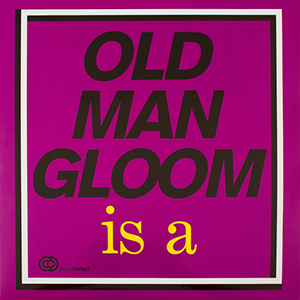 For a band notorious for doing the absurdly perverse, such as releasing two albums both titled The Ape of God simultaneously, but with entirely different track lists, Mickey Rookey Live at London is a surprisingly straight-forward live album. Across 18 songs, spanning since the super-group’s inception in 2000, it works great as a stand-alone release, but also as a distillation of the band’s decade and a half career, captured one night in 2014.
For a band notorious for doing the absurdly perverse, such as releasing two albums both titled The Ape of God simultaneously, but with entirely different track lists, Mickey Rookey Live at London is a surprisingly straight-forward live album. Across 18 songs, spanning since the super-group’s inception in 2000, it works great as a stand-alone release, but also as a distillation of the band’s decade and a half career, captured one night in 2014.
OMG has largely been a studio project made up of some very well known artists in the various post-metal heavy genres:guitarist/vocalists Aaron Turner (Isis, Mamiffer) and Nate Newton (Converge),bassist Caleb Scofield (Cave-In), and drummer Santos Montano.Unsurprisingly from the line-up and the players’ various side-projects, the actual OMG sound is a amalgamation of various metal and hardcore subgenres, but there are always surprises to be had.The set opener "Shadowed/Gift" leads off with a sustained drone and shrill feedback before slowly being melded into a distorted, noisy chug, then into a more traditional doomy metal framework.Similarly, "Common Species" features the band immediately launching into a heavy, pounding mess that gets darker and bleaker before it concludes.
While these are common elements found throughout Mickey Rookey, variations occur. For example, the heavy pounding rhythms and bass-lead melody of "Regain/Rejoin" called to mind a more metal focused Head of David.On "To Carry The Flame (Radio Edit)," the crew provides all slow metal screams and a grumpy, slogging pace that fits the band’s name very well.However, there is a significant amount of variation and change throughout, and also some of the album’s most overly melodic stuff.
Admittedly, I latched on mostly to the experimental moments, like the twinkling electronics heavy "Christmas Eve Pt.III" or the obtuse pseudo-reggae of "Scraps Theatre Presents."The highlight of the disc, however, is the 12 minute epic "Zozobra Pts. I-III."At first a mass of stabbing distorted guitar, the mix is slowly filled in, complete with more conventional singing for background vocals.The sound transitions nicely from some of the performance’s ugliest moments to some of its most beautiful, and a multi-part suite structure that makes it extremely engaging.
Having never been a huge fan of pure metal and many of its multiple permutations, I will admit that some of the pieces did not resonate with me (mostly because of the vocal style), but on the whole, Mickey Rookey is an excellent document of Old Man Gloom and their infrequent performances.The depth and variety of the band’s playing though is what makes this record shine, and that dry, sardonic sense of humor the band has always employed succeeds live just as well as it does in the studio.
samples:
 
Read More
- Administrator
- Albums and Singles
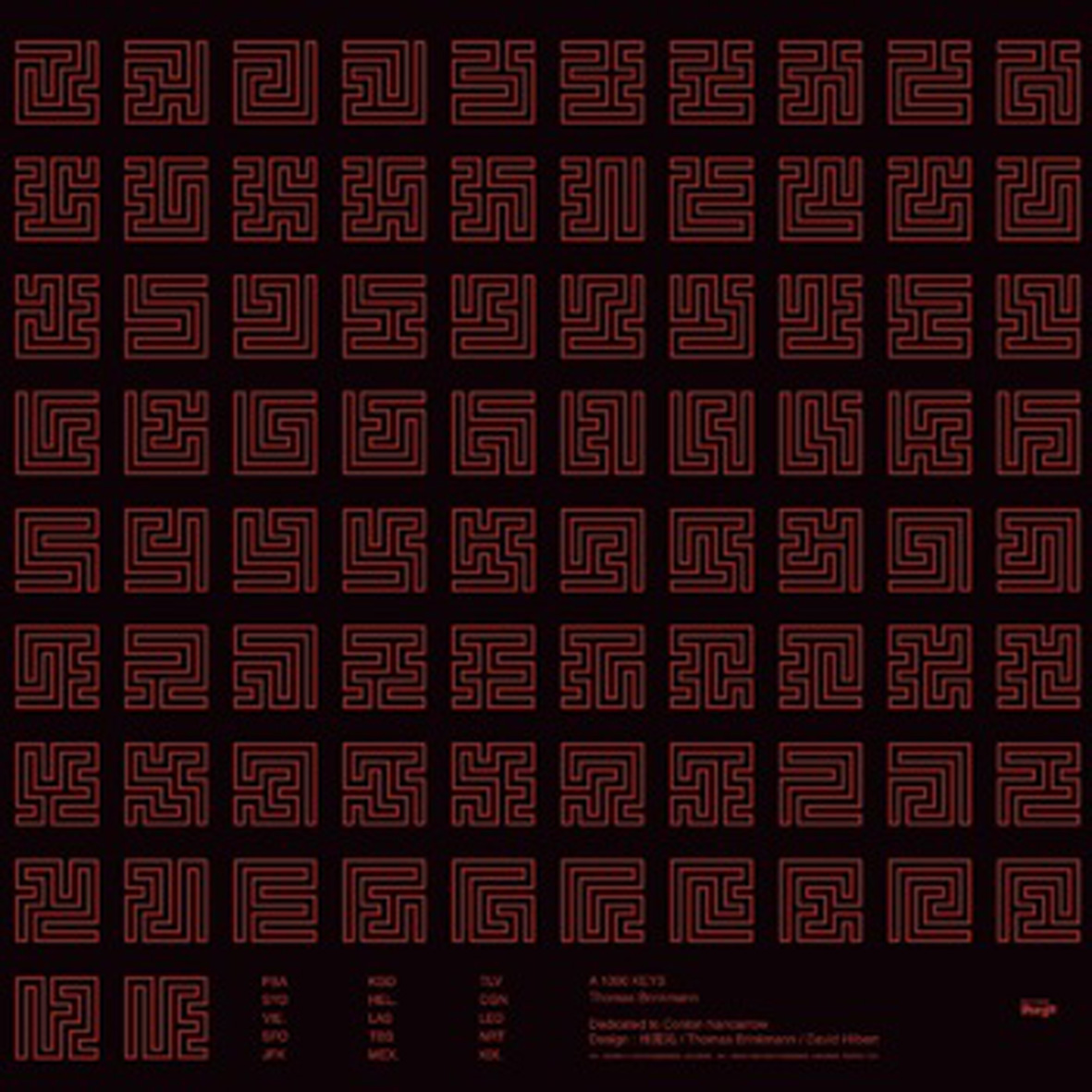
Lamentably, I have not been following Thomas Brinkmann’s career at all until now, as I had unfairly assumed that he was exclusively a techno producer and probably not of much interest to a connoisseur of the fringes like me.  As it turns out, however, his releases for Editions Mego are quite radically experimental and very much to my taste, particularly this one.  A 1000 Keys has its roots in an intriguing and ambitious premise: Brinkmann basically converted the sound of a grand piano into binary code as a "fatal homage to minimalism and a consequent denial of virtuosity and the idea of creative genius."  Naturally, that claim was more than enough to pique my interest, but I would not have stuck around for very long if that concept had not translated into such a gloriously visceral and dissonant tour de force.  Brinkmann decisively delivers on his bold promise, taking the more chromatic and violent strains of modern classical piano composition to an impressively inhuman extreme.
In keeping with his ballsy and quixotic rejection of all warmth and humanity, Brinkmann named each of these 18 pieces using three-letter airport codes.  His reasoning was that airports are "non-places that establish their own space-and-time continuum, while lacking individual identity and history."  Also, they are "sterile passages for anonymous, objectified masses."  I definitely like the way Brinkmann thinks.  Unsurprisingly, the corresponding music is similarly anonymous and lacking individual distinctions, turning something that would normally be a flaw into a perverse virtue of sorts.  There is nothing resembling a conventional melody anywhere on 1000 Keys and Brinkmann does not expression much interest in differentiating the pieces with significant rhythmic or dynamic variations.  He even seems content to mostly restrict his activities to the rumbling lower registers.  What he offers instead, however, is an unrelenting onslaught of jagged, percussive dissonance.  Occasionally, he changes the formula a bit with something like a deep, buzzing drone ("TLV"); a scratching and popping rhythm ("YWG"); or an occasional brief interlude of gently burbling synth-like tones ("SFO" and "HEL"), but the overall aesthetic is very clearly one of nerve-jangling punishment and harsh chromaticism.
Aside from the impressive and maniacal show of force, I was most struck by the pieces where Brinkmann digitally obliterates the piano-like elements so completely that his grand piano sounds like crunching industrial machinery, as he does with the relentless and crushing locked-groove of "CGN" and the grinding closer "KIX."  Neither piece would sound out of place on a noise album.  Nor would the jagged, disorienting, and dissonant arpeggios of "KGD" sound all that out of place on a Morton Feldman album…or at least they would not if they were played with an uncharacteristic degree of violence.  For the most part, however, Brinkmann's pieces remind me favorably of Pierre Boulez’s more confrontational work, but played with an unfeasible number of fingers and very much fixated on the gut-level power of the churning lower register.  While those differences are admittedly significant on Brinkmann's side of the equation, they do not matter all that much on my end.  Aside from the two palette-cleansing synth-like interludes, listening to 1000 Keys is basically like being attacked for 70 minutes or so: the differences between songs can seem very trivial as the cumulative effect adds up.  No one cares about the nuances that separate being hit with a bat versus being hit with a hammer.  Both hurt.  The same is true of punishing repetition, ugly percussive chords, and roiling chromatic runs in the lower registers.
Perversely, 1000 Keys greatest faults can also be seen as thematically pure attributes.  Without question, this is a very single-minded and one-dimensional album and it stretches out for two LPs.  Listening to the entire album is exhausting.  However, that sameness and unrelenting density also gives the album a monolithic power that effectively emphasizes Brinkmann's intended statement.  Another possible critique is that Brinkmann's "denial of virtuosity and the idea of creative genius" is literally just that: a denial, rather than any kind of replacement.  Post-1000 Keys, I am still more than happy to seek out both virtuosity and genius, but Brinkmann at least showed that the alternative can offer quite an impressively bludgeoning and absorbing spectacle.  Also, I think he definitely pushed the envelope a bit regarding the piano’s range of expression.  Admittedly, I wish 1000 Keys showed a bit more depth and variety compositionally, but that is probably beside the point and possibly even antithetical to what Brinkmann was trying to do here.  These are not brilliant compositions, but they are fascinating experiments and great art.  Thomas Brinkmann basically took one of the greatest symbols of Art and Genius (the grand piano) and weaponized it.  More importantly, he crafted an album ferocious and uncompromising enough to make me care.  A 1000 Keys is a seriously heavy album.
 
 
Read More
- Administrator
- Albums and Singles
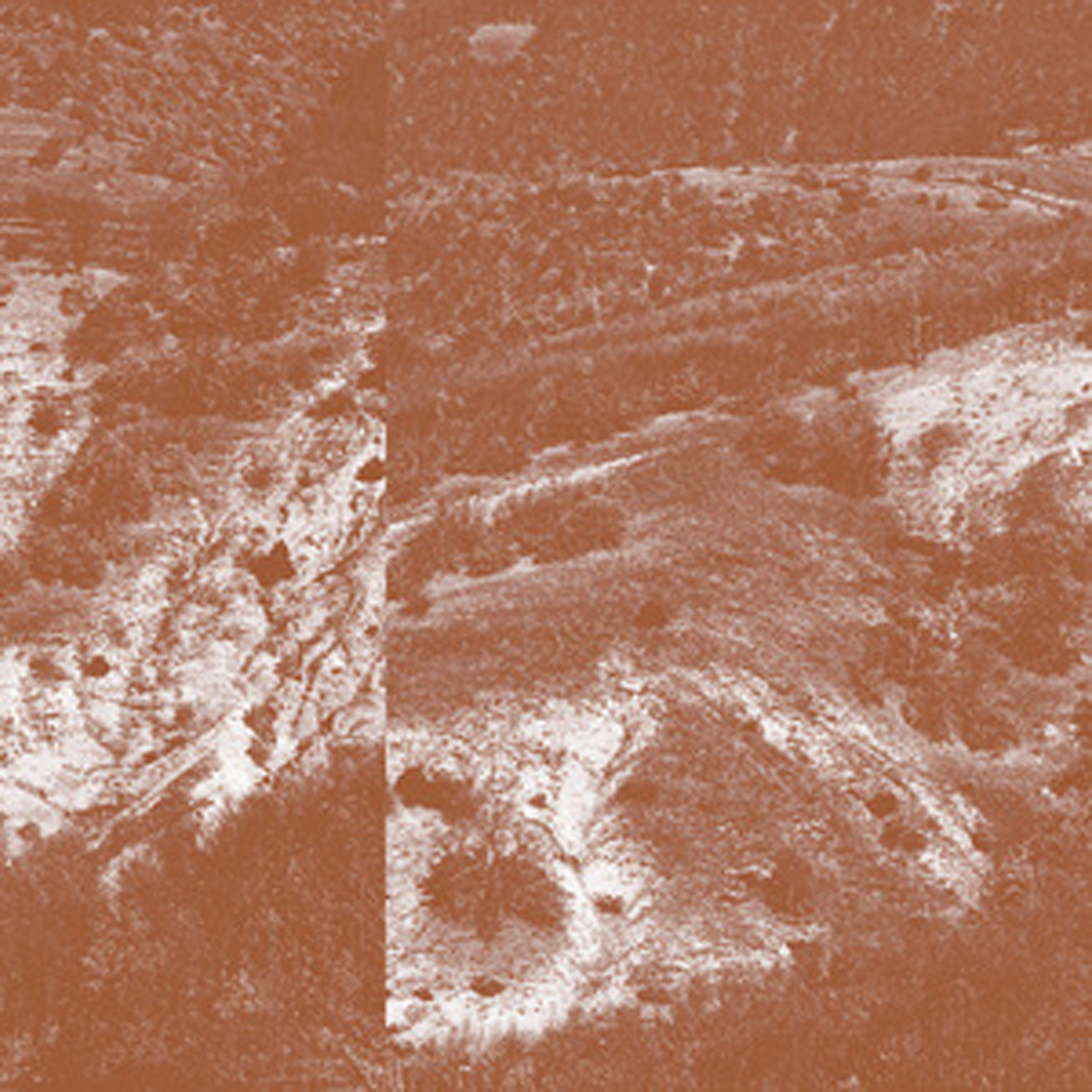
I first encountered John Chantler's work with 2010's Luminous Ground and summarily dismissed him as just another vintage gear fetishist making gently blooping, blurting, and semi-random-sounding modular synth music. In hindsight, I still do not think that I was entirely wrong about that, but I was quite mistaken in my assumption that that album conveyed the full range of Chantler's artistry. While some parts of Which Way to Leave? similarly invite comparisons to the fading analog synth revival that has plagued me for the last few years, the more substantial pieces show that Chantler is a formidable composer with a vibrant and distinctive style of gnarled and grainy unpredictability.  When Chantler is good, he is extremely good.
It is very easy to see my why previous exposure to Chantler's work did not make much of an impression, as Which Way to Leave? shows that Chantler's greatest talents seem to be textural and that entropy is probably his muse.That being the case, a modular synthesizer should theoretically be the perfect instrument for such an artist.Unfortunately, it is a little too perfect, as it lends itself so well to textured unpredictability that almost everyone wielding a vintage modular synth sounds about the same to me, aside from a few singular artists like Alessandro Cortini.Thankfully, it seems like Chantler is merely using his synth as a tool this time around rather than keeping his hat in the ring with the other synth purists.I have no idea what he plays on this album, as he credits himself with just "electronics," but I do know that he has a few guest musicians on board and that there is ample evidence that these pieces are multi-layered compositions rather than solo improvisations or one-take performances.Amusingly, this is also Chantler's "most explicitly melodic" record according to Room40, a claim that makes me curious to hear how much more amelodic his previous work could possibly be.I suppose the opening "Falling Forward" technically does have a melody, but its appeal lies primarily in how mangled, blown-out, and stuttering that melody gets by the time Chantler is done with it.  Whatever relationship Chantler has with melody seems to be a rather abusive one, as the main theme of "Falling Forward" truly sounds like it is being played at the wrong speed though a blown speaker as the electricity flickers and shorts out.
That said, the best pieces are indeed the ones that balance Chantler’s sizzling, crackling, and gently blooping textural soundscapes with at least a hint of melody.Consequently, "Falling Forward" is one of the album’s legitimate high points: its greatest strength is in the contrast between its dense, gnarled, and sputtering central motif and the nimbus of unpredictably harmonizing sustained tones on the periphery.Another strong piece is "Fixation Pulse," though it takes a while to evolve beyond a subdued host of alien hums and bleeps.Gradually, however, a distorted and sizzling ghost of a melody burns through the haze and achieves a kind of otherworldly, slow-motion beauty.  I suspect my favorite piece on the album is the lengthy "First December" though, which sounds like gorgeous drone work processed through a crazy array of filters that transform it into something vibrantly shuddering, shimmering, and unrecognizably different.That piece is kind of a brilliantly representative microcosm of what Chantler does on this album: sometimes the compositions are strong and sometimes they are not, but the magic lies in how organically alive and otherworldly those compositions can feel.
I suppose the remaining "songs" are quite likable as well, as they are at least admirably warped and evocative. "Lesser Demands," for example, sounds like a field recording from the inside of some kind of giant unearthly beast, while "All Visible Signs" is all woozy twinkling and sad, sea-sick bloops until it transforms into something that resembles nothing less than an alien rainforest.The closing "Beginning Again" is curiously quite similar, but eventually diverges by cohering into a strangely beautiful coda of erratically oscillating feedback and unexpectedly poignant bleeps.I suppose that coda is what separates Chantler's superior work from the rest, as he always excels at setting the stage for something wonderful to emerge, but sometimes seems perfectly content to just remain at that point.When he actually goes one step further and allows something more substantial to take shape, the results can be absolutely sublime.Ultimately, I think only about half of Which Way to Leave? truly approaches greatness, but it is still a complexly layered, subtly hallucinatory, distinctive, and richly absorbing album that seems to get deeper and more compelling with each successive listen.
Samples:
 
Read More
- Administrator
- Albums and Singles
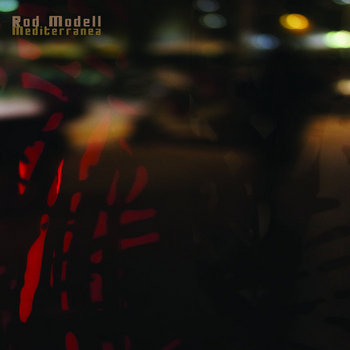
The first solo album from Rod Modell (Deepchord) in nearly 10 years, following up 2007's Incense & Blacklight comes in lush form with, Mediterranea. Clocking in at 72 minutes, this cerebral epic reveals a sense of timelessness and stillness, an exquisite portrayal of reflection that is sonically enriching and emotionally engaging. Opening with field recordings conducted while abroad in the islands of Spain, sculpts a sublime sense of nuance that creeps into fore as time passes, gradually enveloping and evolving into what sounds as an orchestra playing from the fathomless ends of the ocean. The quiet jazz induced snare percussion honors the melody hidden deep beneath the surface. Congas and tribal rhythms accentuate its colorful and vibrant dream-like melodies that slowly expose themselves into the mix. Haunting, alluding to the symphonic, its emotional depth shift gradually, revealing the underlying, subconscious tonal colors. The magic and lushness of the strings, the beautiful resonance of the violin and the love felt in each key stroke tugs right at the heart strings. To us here at Echospace, this may be the most beautiful and inviting piece we've ever heard from Rod, absolutely stunning!
More information can be found here.
Read More
- Administrator
- Albums and Singles

A Ritual Work Remixed From Coil Albums.
Featuring extended & dreamlike remixes of Coil fragments spanning 20 years...
Music for the Performancoid Installation in 23 Parts "Plastic Spider Thing"
Originally issued in 2002 on Coil's Eskaton sub-label.
More information can be found here.
Read More
- Administrator
- Albums and Singles

Wolfgang Voigt has announced the GAS box set, which will be released on 28th October on Kompakt. Inside this comprehensive anthology, listeners will experience the remastered albums ZAUBERBERG (celebrating the 20th anniversary of this essential album), KÖNIGSFORST, POP and the sought-after OKTEMBER 12", all together available as luxurious 10LP+4CD edition, including longer original CD edits never before available on vinyl.
More information can be found here.
Read More
- Administrator
- Albums and Singles

The first book devoted to power electronics, written by artists, fans, and critics.
Power electronics is a genre of industrial or ‘noise’ music that utilises feedback and synthesizers to produce an intense, loud, challenging sound. To match this sonic excess, power electronics also relies heavily upon extreme thematic and visual content— whether in lyrics, album art, or live performance. It is a genre that often invites strong reactions from both listeners and critics, if not dismissed or ignored altogether.
FIGHT YOUR OWN WAR is the first ever English-language book primarily devoted to power electronics, bringing together essays and reviews that explore the current state of the genre, from early development through to live performance, listener experience, artist motivation, gender and subcultures, such as ‘Japanoise’.
Written by artists, fans, and critics from around the world, FIGHT YOUR OWN WAR provides comment on a musical form that is at once theatrical and absurdist, while bringing to listeners a violent, ecstatic, and potentially consciousness-altering experience. In considering this ‘spectacle’ of noise, how far can we simply label power electronics as a genre of shock tactics or of transgression for transgression’s sake?
About the editor
Jennifer Wallis is a historian and author, currently living in Oxford, UK. She is a fan of power electronics and has previously worked with noise act Hate-Male.
Contributors
Mikko Aspa, Tom Bench, Bindweed, Scott Candey, Nathan Clemence, Andrew Cooke, Mike Dando, Sonia Dietrich, d foist, Spencer Grady, Clive Henry, Grant Hobson, Kevin Matthew Jones, Paul Margree, Nick Nihilist, Jack Sargeant, Stephen Sennitt, Richard Stevenson, Duncan Taylor, Philip Taylor, Jennifer Wallis, Daniel Wilson, Ulex Xane
More information can be found here.
Read More

